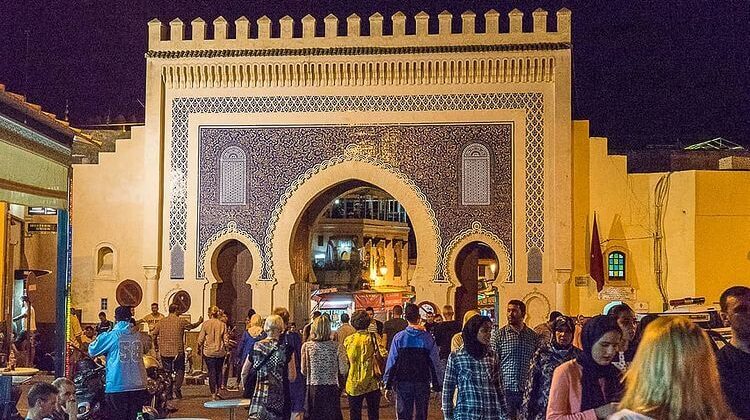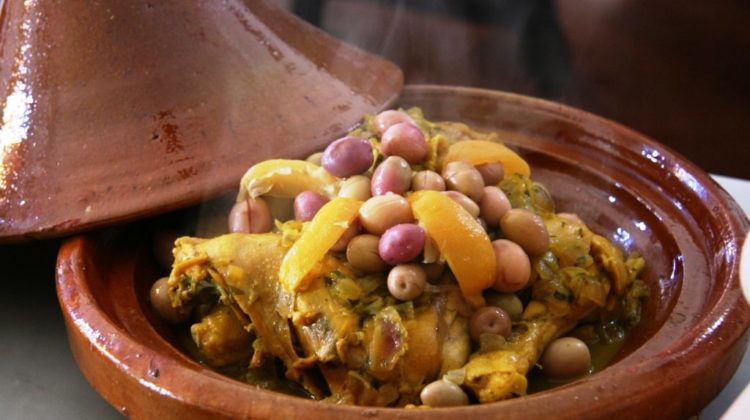
Morocco has established itself as a crossroad of civilizations, who, over the course of hundreds and even thousands of years, have managed to leave their mark on the cultural landscape of the kingdom.
So it’s only natural that Moroccan people mirror this diversity in their customs, traditions, and lifestyles.
Today the country boasts a population of 36.7 million, 4 languages, 9 world heritage sites, and 3 religions -Islam as predominant along with Christian and Jewish minorities.
Here’s a general overview of Moroccan people and culture
Table of Contents
Ethnicity, Language and Religion
Ethnic Groups in Morocco
- The two major ethnic groups in Morocco are the Arabs and the Berbers.
- The Arabs arrived as early as the late 8th century and conquered much of the coastal region. They established dynasties in Morocco and together with native Moroccan Berbers, extended control to what is now southern Spain and Portugal.
- There was a lot of intermixing between locals and Arabs, and today many Moroccan people claim mixed ethnicity, with only a few identifying as pure Arab.
Language and Religion
- Over time, Arabic became the primary language, but the most significant import of the Arabs was Islam that shaped the Moroccan Culture.
- Today, 99% of Moroccan people are Muslim. Most are Sunni Muslims, the most common sect worldwide.
- A small minority are Shia, the second most common sect worldwide, and a few follow Sufism, a branch of Islam known for its sacred poetry and mysticism.
- In the past, Morocco had a significant Jewish population, but many migrated to Israel and other countries. Only a few thousand Jewish Moroccans still live in the country.
- There are also a few hundred thousand Christians living in Morocco, mostly of European descent. You’ll see mosques in every neighborhood, and a handful of churches and synagogues in larger cities.
Berber culture and influence
- People tend to associate North Africa primarily with Arab culture, since Arabic is the official language and most Moroccan people follow Islam.
- However, Berber culture remains a very strong, and perhaps in many ways the primary influence on Moroccan culture.
- Since the Arabs focused their conquests on the coastal regions, certain parts of the interior were less affected, and retained a stronger sense of indigenous identity.
- When traveling in Morocco, you may notice that rural mountain and desert regions are more clearly Berber than other parts of Morocco.
- As much as 30% of the population of Morocco is of pure Berber heritage, and the vast majority of the remaining 70% has at least some Berber ancestry.
- There are many Berber groups in Morocco with different languages and customs, including the Drawa, the Shilha, the Riffia, and the Sanhaja. They all use the general name Amazigh, meaning free people, to denote their identity as indigenous Moroccans.
Recent influences
- Both France and Spain colonized parts of the country, leaving lasting impacts in language, architecture, education systems, law, art, and cuisine.
- Even though Morocco gained full independence in 1956, the local dialect of Arabic is peppered with French and Spanish words.
- Morocco is also increasingly a destination for Africans from other countries seeking better economic opportunities. Immigrants from Senegal and Cameroon settle in northern Morocco, either permanently or on their way Europe, bringing with them new customs and vibrant styles of art, music, and dance
Customs and Traditions
Morocco is a land with an expansive history of customs and traditions.
The country is worldly renowned for its incredible hospitality and its impressive blend of cultures and religions. It is also a land of extraordinary contrasts and remarkable diversity.
What could be more emblematic of Moroccan people, customs and cultural heritage than a traditional Moroccan wedding.
Moroccan weddings are an elaborate affair that celebrates unity, love, happiness, and prosperity.
It is a vibrant commemoration of sanctity and virtue that engages all five senses, through the colors, the music, the clothing, and the food.
People wear their most luxurious and extravagant frocks, with exquisite beaded caftans and fascinating sequined takshitas in vibrant colors.
Weddings aside, the variety in traditional Moroccan clothing is specific to each occasion, based on how casual or formal it is.
Djellabas are the most relaxed form of traditional clothing, you can find people sporting while running for errands or while visiting family and friends.
Whereas caftans and jabadors can be worn for religious holidays or engagement parties and takshitas are reserved for more formal settings.
Moroccan Cuisine

With centuries of trade, conquest and immigration, Moroccan food preparation and consumption habits have been frequently shaped and reshaped.
The region takes pride in its culinary scene with its exquisite flavors and tantalizing aromas. Geographic diversity and climate greatly allow for the cultivation of an impressive range of foods and ingredients.
Because of its strategic location, Morocco has been part of the spice trade route in the past. This marked a truly defining period in the history of North Africa and Morocco in particular.
It also helped broaden the country’s culinary scope to incorporate new ingredients, herbs and spices that have now become a staple in Moroccan cuisine.
Moroccan people may differ in terms of their ethnicity, religious beliefs, or political affiliation, but they do share an avid appreciation for food and cooking.
Tajine, Couscous, Pastilla, and Harira are testimony of regional influences combined with ancient cooking traditions.
A lot of Morocco’s staple dishes, lamb tajine with dried apricots or couscous with caramelized onions and raisins, for example, consist of blending sweet and savory flavors together, a tradition that goes back to Ancient Roman cuisine.
When you try to dissect the history of any traditional Moroccan dish, you will find hints of Sicilian, Maltese, Greek, and Arab influences.
Related Post: Moroccan Cuisine
Music Scene
The multi-ethnic background of Moroccan culture cannot be more evident than in the country’s musical landscape and dance forms.
Despite the Western music scene’s heavy impact on contemporary Moroccan artists, there has been a recent yearning for more traditional and authentic Moroccan music.
This longing to revisit one’s history is encapsulated in the revival of Gnaoua, Berber, Rai, and Andalusian music through annual concerts and festivals dedicated to these ethnic genres.
A lot of young musicians and artists have also contributed to this revival by performing covers of traditional songs using more modern-fitting rhythms and instruments to appeal to the youth.
Like a lot of customs and traditions, Moroccan music also varies depending on the geographic location of each region.
- Andalusian music, a mixture of Spanish and Arab influences, dates back to the 9th century. It’s considered to be Morocco’s classical music, and it’s generally played on special occasions and national celebrations like Eid.
- Chaabi music is the equivalent of pop, it’s very lively and energetic and is usually played in weddings, baptisms, and parties to urge people to dance and have fun.
- Berber music is exceptionally ritualistic, it requires its own ceremony with intricate dance choreographies that exude an eerie, almost supernatural atmosphere.
- On the other hand, Gnaoua music is a mixture of Sub-Saharan/ African, Berber, and Arab music. Gnaoua musicians heavily rely on drums and castanets. It’s a languidly mystical genre with African lyrics that has recently been mixed with notes of jazz and blues.
Architecture and Art
Morocco is renowned for its stunning architecture and traditional artistry. The country’s architecture is characterized by intricate tilework, stucco carvings, and geometric patterns.
The historic cities of Marrakech, Fes, and Chefchaouen are known for their well-preserved medinas, or old towns, which are UNESCO World Heritage Sites. Moroccan art also includes calligraphy, ceramics, and intricate textiles, all reflecting the Islamic influence.
Related Post: Moroccan Architecture
Conclusion:
Morocco, with its diverse people, rich history, and captivating culture, is a land of contrasts and complexities. From the bustling souks of Marrakech to the serene beauty of the Sahara Desert, from the flavors of its cuisine to the rhythms of its music,
Morocco offers a captivating journey of discovery. The Moroccan people and culture reflect a harmonious blend of traditions and influences that make this North African nation a remarkable and inviting destination for travelers and a source of pride for its citizens.